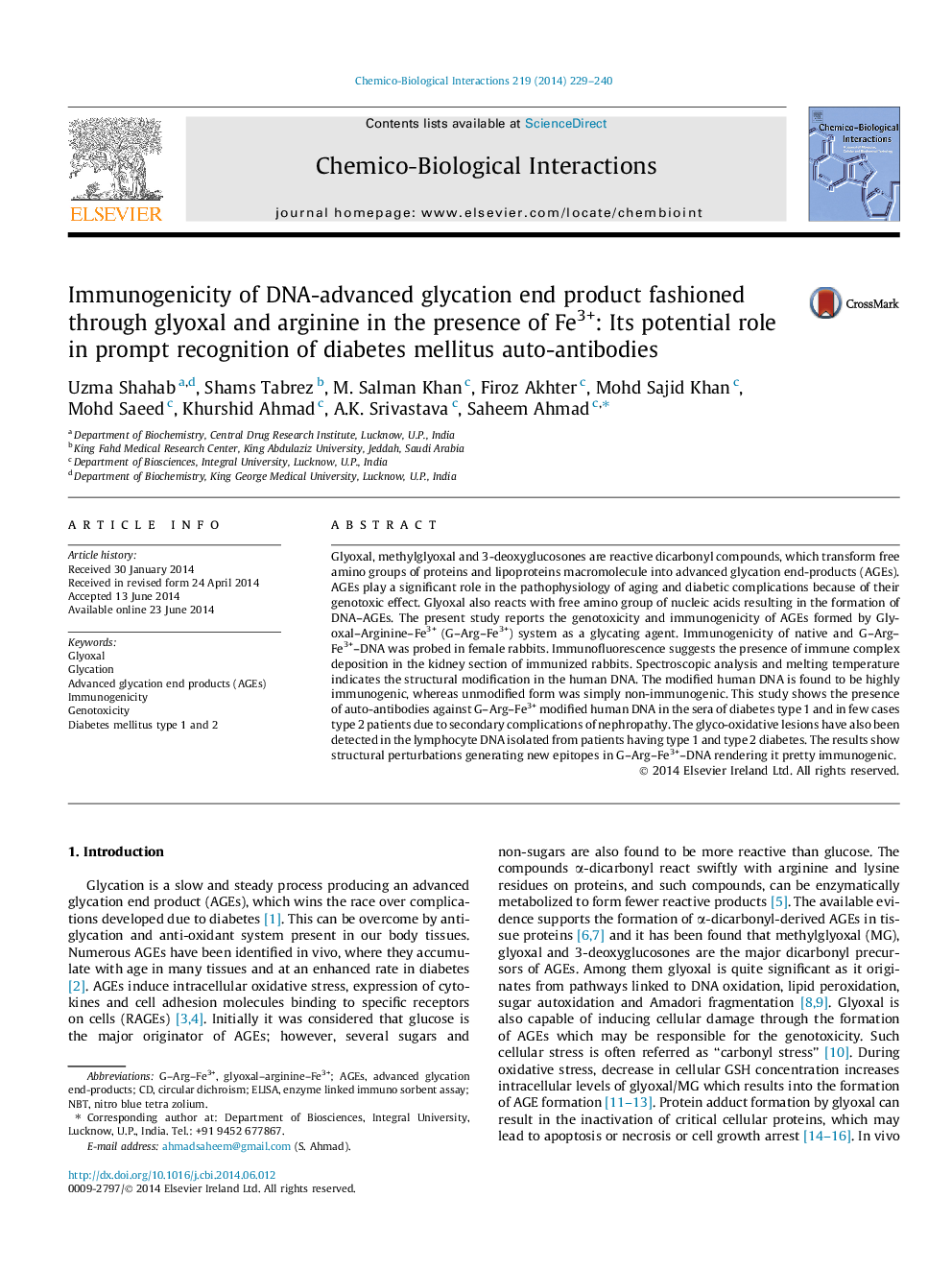| کد مقاله | کد نشریه | سال انتشار | مقاله انگلیسی | نسخه تمام متن |
|---|---|---|---|---|
| 2580450 | 1561622 | 2014 | 12 صفحه PDF | دانلود رایگان |

• G–Arg–Fe3+ system results in generation of AGEs which is genotoxic to human lymphocyte.
• Modification of human DNA results in structural perturbations generating new epitopes.
• Modified human DNA was found to be highly immunogenic in experimental animals.
• The induced antibodies exhibited a wide range of heterogeneity and poly-specificity.
Glyoxal, methylglyoxal and 3-deoxyglucosones are reactive dicarbonyl compounds, which transform free amino groups of proteins and lipoproteins macromolecule into advanced glycation end-products (AGEs). AGEs play a significant role in the pathophysiology of aging and diabetic complications because of their genotoxic effect. Glyoxal also reacts with free amino group of nucleic acids resulting in the formation of DNA–AGEs. The present study reports the genotoxicity and immunogenicity of AGEs formed by Glyoxal–Arginine–Fe3+ (G–Arg–Fe3+) system as a glycating agent. Immunogenicity of native and G–Arg–Fe3+–DNA was probed in female rabbits. Immunofluorescence suggests the presence of immune complex deposition in the kidney section of immunized rabbits. Spectroscopic analysis and melting temperature indicates the structural modification in the human DNA. The modified human DNA is found to be highly immunogenic, whereas unmodified form was simply non-immunogenic. This study shows the presence of auto-antibodies against G–Arg–Fe3+ modified human DNA in the sera of diabetes type 1 and in few cases type 2 patients due to secondary complications of nephropathy. The glyco-oxidative lesions have also been detected in the lymphocyte DNA isolated from patients having type 1 and type 2 diabetes. The results show structural perturbations generating new epitopes in G–Arg–Fe3+–DNA rendering it pretty immunogenic.
Journal: Chemico-Biological Interactions - Volume 219, 5 August 2014, Pages 229–240